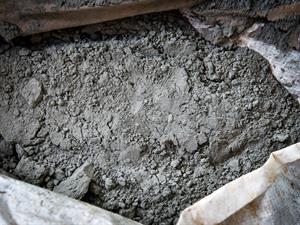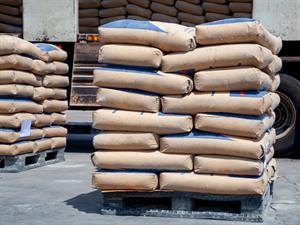PDF chapter test TRY NOW
Joseph Aspdin, in \(1824\), invented cement which we use in modern days.
Cement is a binder, and a powdery substance made of different minerals used for various construction purposes. Cement comprises eight ingredients: lime, silica, aluminium, alkaline, iron oxide, calcium sulfate, sulphur trioxide, and magnesia. These are obtained from chalk, bauxite, iron ore, limestone, shale, clay etc.
The percentage of chemicals that should be present in cement are as follows below.
| Name | Symbols | Percentage | Properties of chemicals in the cement |
| Calcium oxide (Lime) | \(59\)-\(64\) | Excess lime causes expansion or disintegration. If lime is deficient, then it causes the cement to set quickly during mixing. | |
| Silicon dioxide (Silica) | \(19\)-\(24\) | It gives strength to the cement with the formation of dicalcium and tricalcium silicates. If present in excess, they will prolong the setting time of the cement. | |
| Aluminium oxide (Alumina) | \(3\)-\(6\) | It gives quick setting property to the cement, but when added in excess, it weakens the cement. | |
| Iron (III) oxide | \(1\)-\(4\) | It provides hardness, colour, and strength to the cement. | |
| Magnesium oxide | \(3\)-\(5\) | It provides hardness and colour to the cement. Excess of magnesia makes the cement unsound. | |
| Sulfur trioxide | \(1\)-\(3\) | It helps in making the cement sound. Excess of it causes the cement to become unsound. | |
| Alkalies | Strong bases | \(0.2\)-\(1.3\) | Excess of alkalies causes aggregate reaction, efflorescence and staining when used. |
The above mentioned percentage should be maintained to obtained cement with high strength.
 |
Cement powder
Preparation:
The preparation of cement includes various stages as below.
Mining:
Mining is the process where the raw materials are collected from various sources by blasting or by drilling. Then the raw materials are transported to the crusher.
Crushing:
The raw materials are crushed here. They are crushed to a size of \(3\) inches when the process takes place twice.
Drying and Grinding:
The crushed raw materials are dried using drying chambers. The kiln or the preheater dries the raw materials before it enters the grinding section. In this drying process, the hot gases are passed from the top. The temperature is around \(900\) to \(1000\), where the raw materials enter the kiln, is known as the calcining zone.
The dried raw materials are ground in this chamber. There are balls that are of different sizes to grind the raw materials into a fine powder. Here, the balls may be of ceramic, stainless steel, iron etc.
Sintering:
The process of breaking down the bonds present in the raw materials is known as sintering by the process of heating. Here, the new substance formed is known as the clinker. The burning zone starts after the calcining zone, where the temperature is about \(1350\) to \(1450\).
Hereafter, this hot clinker from the kiln is cooled in the air with the help of efficient coolers. The temperature is around \(80\)\(\) to \(90\)\(\). The fast cooling process is very important as it makes the clinker with high strength of cement after grinding.
Cement grinding:
Here, the clinker is mixed with additives and ground, and then the fine, coarse particles are separated and stored, and the final product is ready.
 |
HDPE bags
The package is done in HDPE (high-density polyethene) bags.
Gypsum is added to cement as it controls the hardening rate when cement is mixed with water.
